Refine search
Actions for selected content:
6791 results in Communications and signal processing
Appendix B - Symbols
- from Part VI - Appendices
-
- Book:
- Scalability, Density, and Decision Making in Cognitive Wireless Networks
- Published online:
- 05 December 2012
- Print publication:
- 08 November 2012, pp 322-327
-
- Chapter
- Export citation
XI - Distribution Functions and Measure
- from B - FOUNDATIONS
-
- Book:
- The Theory of Probability
- Published online:
- 05 December 2012
- Print publication:
- 08 November 2012, pp 369-392
-
- Chapter
- Export citation
1 - Introduction
- from Part I - Overview
-
- Book:
- Scalability, Density, and Decision Making in Cognitive Wireless Networks
- Published online:
- 05 December 2012
- Print publication:
- 08 November 2012, pp 3-17
-
- Chapter
- Export citation
XV - Laplace Transforms
- from B - FOUNDATIONS
-
- Book:
- The Theory of Probability
- Published online:
- 05 December 2012
- Print publication:
- 08 November 2012, pp 523-560
-
- Chapter
- Export citation
V - Numbers Play a Game of Chance
- from A - ELEMENTS
-
- Book:
- The Theory of Probability
- Published online:
- 05 December 2012
- Print publication:
- 08 November 2012, pp 139-162
-
- Chapter
- Export citation
Appendix C - Mathematica and MATLAB routines
- from Part VI - Appendices
-
- Book:
- Scalability, Density, and Decision Making in Cognitive Wireless Networks
- Published online:
- 05 December 2012
- Print publication:
- 08 November 2012, pp 328-335
-
- Chapter
- Export citation
Part III - System performance of cognitive wireless systems
-
- Book:
- Scalability, Density, and Decision Making in Cognitive Wireless Networks
- Published online:
- 05 December 2012
- Print publication:
- 08 November 2012, pp 139-140
-
- Chapter
- Export citation
Appendix A - Abbreviations
- from Part VI - Appendices
-
- Book:
- Scalability, Density, and Decision Making in Cognitive Wireless Networks
- Published online:
- 05 December 2012
- Print publication:
- 08 November 2012, pp 317-321
-
- Chapter
- Export citation
Part V - Summary
-
- Book:
- Scalability, Density, and Decision Making in Cognitive Wireless Networks
- Published online:
- 05 December 2012
- Print publication:
- 08 November 2012, pp 301-302
-
- Chapter
- Export citation
10 - Network physical density limitations
- from Part III - System performance of cognitive wireless systems
-
- Book:
- Scalability, Density, and Decision Making in Cognitive Wireless Networks
- Published online:
- 05 December 2012
- Print publication:
- 08 November 2012, pp 164-190
-
- Chapter
- Export citation
15 - Instantiating and updating beliefs across wireless networks
- from Part IV - Integrated awareness and decision making
-
- Book:
- Scalability, Density, and Decision Making in Cognitive Wireless Networks
- Published online:
- 05 December 2012
- Print publication:
- 08 November 2012, pp 252-269
-
- Chapter
- Export citation
III - A First Look at Independence
- from A - ELEMENTS
-
- Book:
- The Theory of Probability
- Published online:
- 05 December 2012
- Print publication:
- 08 November 2012, pp 71-92
-
- Chapter
- Export citation
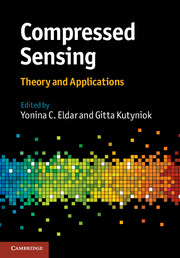
Compressed Sensing
- Theory and Applications
-
- Published online:
- 05 November 2012
- Print publication:
- 17 May 2012
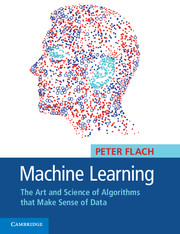
Machine Learning
- The Art and Science of Algorithms that Make Sense of Data
-
- Published online:
- 05 November 2012
- Print publication:
- 20 September 2012
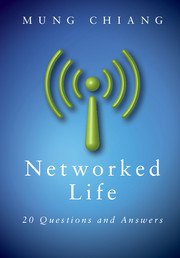
Networked Life
- 20 Questions and Answers
-
- Published online:
- 05 November 2012
- Print publication:
- 10 September 2012
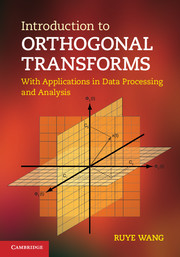
Introduction to Orthogonal Transforms
- With Applications in Data Processing and Analysis
-
- Published online:
- 05 October 2012
- Print publication:
- 08 March 2012
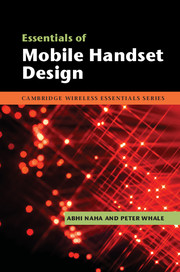
Essentials of Mobile Handset Design
-
- Published online:
- 05 October 2012
- Print publication:
- 30 August 2012

Next-Generation Internet
- Architectures and Protocols
-
- Published online:
- 05 October 2012
- Print publication:
- 03 February 2011
Index
-
- Book:
- Machine Learning
- Published online:
- 05 November 2012
- Print publication:
- 20 September 2012, pp 383-396
-
- Chapter
- Export citation
Epilogue: Where to go from here
-
- Book:
- Machine Learning
- Published online:
- 05 November 2012
- Print publication:
- 20 September 2012, pp 360-362
-
- Chapter
- Export citation
